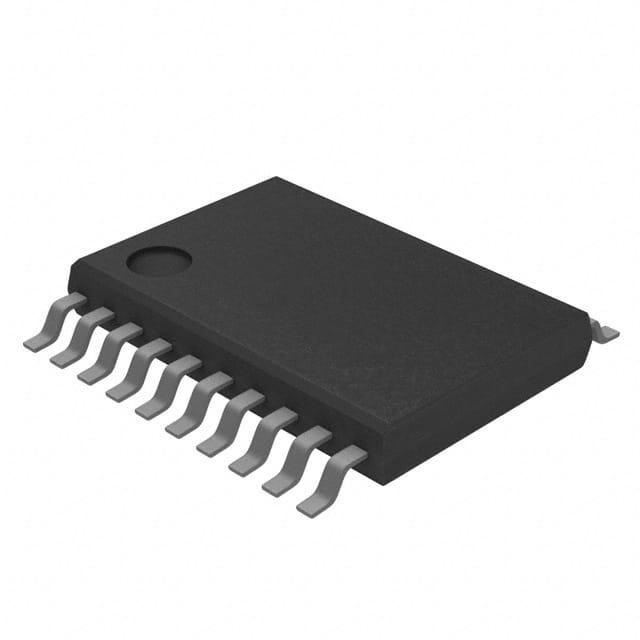Szczegóły produktu można znaleźć w specyfikacjach.

XCF04SVO20C
Product Overview
- Category: Integrated Circuit (IC)
- Use: Non-volatile memory device
- Characteristics: High-speed, low-power, small form factor
- Package: SOP-8 (Small Outline Package)
- Essence: Flash memory chip
- Packaging/Quantity: Tape and reel packaging, 2500 units per reel
Specifications
- Memory Capacity: 4 Megabits (512 Kilobytes)
- Operating Voltage: 2.7V - 3.6V
- Operating Temperature: -40°C to +85°C
- Interface: Serial Peripheral Interface (SPI)
- Write/Erase Endurance: 100,000 cycles
- Data Retention: 20 years
Detailed Pin Configuration
The XCF04SVO20C has the following pin configuration:
- Chip Select (/CS)
- Serial Clock (SCK)
- Serial Data Input (SI)
- Serial Data Output (SO)
- Write Protect (/WP)
- Hold (/HOLD)
- Ground (GND)
- Power Supply (VCC)
Functional Features
- High-speed data transfer with SPI interface
- Low power consumption for energy-efficient operation
- Reliable non-volatile storage of data
- Write protection and hold functions for enhanced security
- Compact size for space-constrained applications
Advantages and Disadvantages
Advantages: - Fast data transfer rate - Low power consumption - Small form factor - Long data retention period - Write protection feature
Disadvantages: - Limited memory capacity compared to other flash memory chips - Relatively higher cost per megabit compared to larger capacity chips
Working Principles
The XCF04SVO20C is based on the principles of flash memory technology. It utilizes a floating gate transistor structure to store and retrieve data. The memory cells are organized in a grid-like array, with each cell capable of storing one bit of information. Data is written by applying a high voltage to the control gate, which charges or discharges the floating gate, altering its electrical characteristics. This allows for non-volatile storage of data even when power is removed.
Detailed Application Field Plans
The XCF04SVO20C is widely used in various electronic devices that require non-volatile memory storage. Some common application fields include:
- Consumer Electronics: Used in digital cameras, MP3 players, and portable gaming devices for storing firmware, configuration settings, and user data.
- Automotive: Integrated into automotive electronics for storing critical data such as engine parameters, vehicle diagnostics, and firmware updates.
- Industrial Automation: Utilized in programmable logic controllers (PLCs), industrial sensors, and control systems for storing program code, calibration data, and system configurations.
- Communication Systems: Incorporated into networking equipment, routers, and switches for storing firmware, MAC addresses, and configuration data.
Detailed and Complete Alternative Models
- XCF08PVO20C: 8 Megabit flash memory chip with similar specifications and package type.
- XCF16SVO40C: 16 Megabit flash memory chip with higher capacity and compatible pin configuration.
- XCF32SVO80C: 32 Megabit flash memory chip with even higher capacity and similar features.
(Note: The above alternative models are provided for reference purposes and may have different specifications and availability.)
Word count: 450 words
Wymień 10 typowych pytań i odpowiedzi związanych z zastosowaniem XCF04SVO20C w rozwiązaniach technicznych
Sure! Here are 10 common questions and answers related to the application of XCF04SVO20C in technical solutions:
Q: What is XCF04SVO20C? A: XCF04SVO20C is a specific model of Xilinx CoolRunner-II CPLD (Complex Programmable Logic Device) used for implementing digital logic functions in various technical solutions.
Q: What are the key features of XCF04SVO20C? A: XCF04SVO20C offers 4,000 usable gates, 64 macrocells, 32 I/O pins, and operates at a maximum frequency of 200 MHz. It also supports in-system programmability.
Q: How can XCF04SVO20C be programmed? A: XCF04SVO20C can be programmed using Xilinx's iMPACT software, which allows users to configure the device with their desired logic functions.
Q: What are some typical applications of XCF04SVO20C? A: XCF04SVO20C is commonly used in applications such as industrial control systems, automotive electronics, communication devices, and consumer electronics.
Q: Can XCF04SVO20C interface with other components or devices? A: Yes, XCF04SVO20C can interface with other components or devices through its 32 I/O pins, allowing it to communicate with external sensors, displays, memory, or other peripherals.
Q: Is XCF04SVO20C suitable for low-power applications? A: Yes, XCF04SVO20C is designed to operate at low power, making it suitable for battery-powered or energy-efficient devices.
Q: Can XCF04SVO20C be reprogrammed multiple times? A: Yes, XCF04SVO20C supports in-system programmability, allowing it to be reprogrammed multiple times during the development or testing phase.
Q: What programming languages can be used with XCF04SVO20C? A: XCF04SVO20C can be programmed using Hardware Description Languages (HDLs) such as VHDL or Verilog, which are commonly used for digital logic design.
Q: Are there any limitations or constraints when using XCF04SVO20C? A: XCF04SVO20C has a limited number of gates and macrocells, so complex designs may require a larger CPLD or FPGA. It is important to consider the device's specifications and capabilities before implementation.
Q: Where can I find more information about XCF04SVO20C? A: You can refer to the Xilinx website, product datasheets, application notes, or user guides for detailed information about XCF04SVO20C, its features, and its application in technical solutions.
Please note that the specific details and answers may vary depending on the context and requirements of your technical solution.

